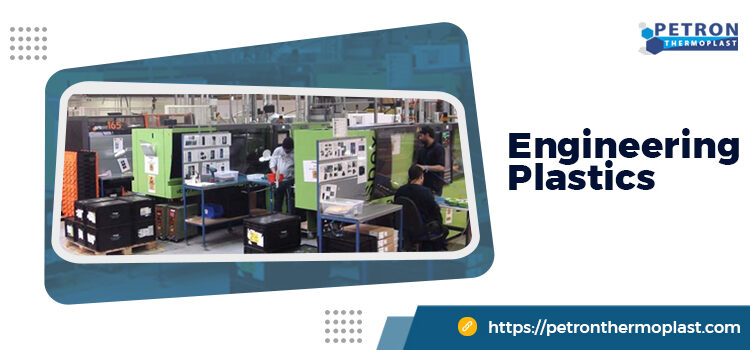The Importance of Engineering Plastics for Various Kinds of Industrial Needs
The Importance of Engineering Plastics for Various Kinds of Industrial Needs | Benefits of Engineering Plastics
Engineering plastics are a class of plastics commonly used in industries due to their improved mechanical and thermal properties. They are primarily used in thermoplastic rather than thermosetting materials because they can be remoulded into the desired shape and size whether or not they have cooled and settled.
Because of their excellent mechanical, chemical, strength, rigidity, self-lubrication, and fire resistance, engineering plastic has become the fabric of choice for many applications. Certain engineering plastic, such as polycarbonates and polyamides, are efficient and useful due to their high tolerance to impact and abrasion.
Introduction to Plastics Engineering | Introduction to Engineering Plastics
Plastics engineering is a discipline that concentrates on designing, evolving, and fabricating plastic parts that meet the needs of the intended application. It implies that each plastic product designed for a specific application must satisfy the three “F’s” of form, fit, and function.
When discussing “wearable safety for eye protection,” an expert would produce the rigid framework in the form of wearable protective eyewear. It would be to create a shape and size that fits the user comfortably, typically around the eyes and ears. The function would be the strength of the chosen material to act as a protective barrier against foreign objects. It will not impair the user’s normal vision.
Why was Engineering Plastics Developed?
There is a greater need for materials that are lightweight, easier to process, and less expensive than “metals” used as traditional materials to react quickly to mass production. The demand for engineering plastic began around 1960. At the time, manufacturing output was thriving worldwide, and the expansion of industrial production aided Japan’s rapid economic growth.
In the case of automotive parts, lighter and more durable materials than metals have become necessary due to weight reduction issues for fuel efficiency assessments in response to the problem of petroleum resource depletion.
As a result, producers began to demand higher-performance plastics than mainstream engineering plastic, and super engineering plastic was developed.
In terms of mechanical strength and operating temperature, engineering plastic and super engineering plastic is extensively used as transitional materials between general-purpose plastics and metals.
Why is it Necessary to Understand Plastics Engineering?
Understanding plastics engineering is required for developing an innovative, safe, cost-effective, and convenient approach to satisfy the world’s expanding demands. To learn about plastics engineering, one must first grasp its fundamental principles, conceptual design, processing techniques, material properties, and governing regulations.
Understanding the macromolecules and polymers that form the backbone of all plastic materials is one of the first steps toward knowing the basics of polymer engineering.
High Impact Strength for Automotive Applications:
Engineering plastics must meet performance standards such as stiffness and toughness for use in large parts applications such as automobiles. Furthermore, the material must go through a process to be injection moulded.
Generally, stiffer materials are more brittle in short-fibre reinforced plastic engineering. This generalization is supported by a review of the mechanical properties of various grades of polyester engineering resins.
This work aimed to create a PET-based resin with high impact strength and optimum break elongation while maintaining the highest flexural modulus possible.
What is the Significance of Semi-Crystalline Structure?
- Polyesters and other semi-crystalline polymers are pseudo-ductile. They have a high crack initiation energy but a low crack propagation energy when struck. When a sharp notch or crack exists, the parts made from this material may fail catastrophically without soaking up much energy during impact. In the plastics industry, semi-crystalline polymers such as polyester are commonly toughened.
- The general approach is to generate a second dispersed rubbery phase that aids in initiating matrix plastic deformation, thereby dissipating a significant amount of energy before fracture. Rubber particle size must be within a certain range to be effective. The optimal range of rubber particle size varies depending on the polymer.
- Generally, the optimal rubber particle size range for aromatic polyesters like PET and PBT or polyamides like nylon 6 and nylon 66 is between 0.1 and 1 micron. Because most rubbers are neither miscible nor comply with polyesters or polyamides, some kind of reactive compatibilization is generally required to achieve such fine rubber dispersion. The adequate effect modifier and compatibilizer must be selected or designed to develop a material with the desired properties.
What are the Differences Between Ordinary Plastic and Plastics for Engineering?
- The primary distinction between ordinary plastics (general-purpose plastics) and engineering plastic is their high functionality.
- Engineering plastic comes in various types and performs differently, but plastic engineering generally has greater mechanical strength and heat resistance than general-purpose plastics.
- Although engineering plastic typically has a heat resistance temperature of 100 degrees or higher. In comparison, super engineering plastic has a temperature of 150 degrees or higher.
Petron Thermoplast makes the best quality plastic products that have several industrial applications. We offer our quality products at an affordable cost. So, people can buy our engineering plastics and use those efficiently as per their requirements.


